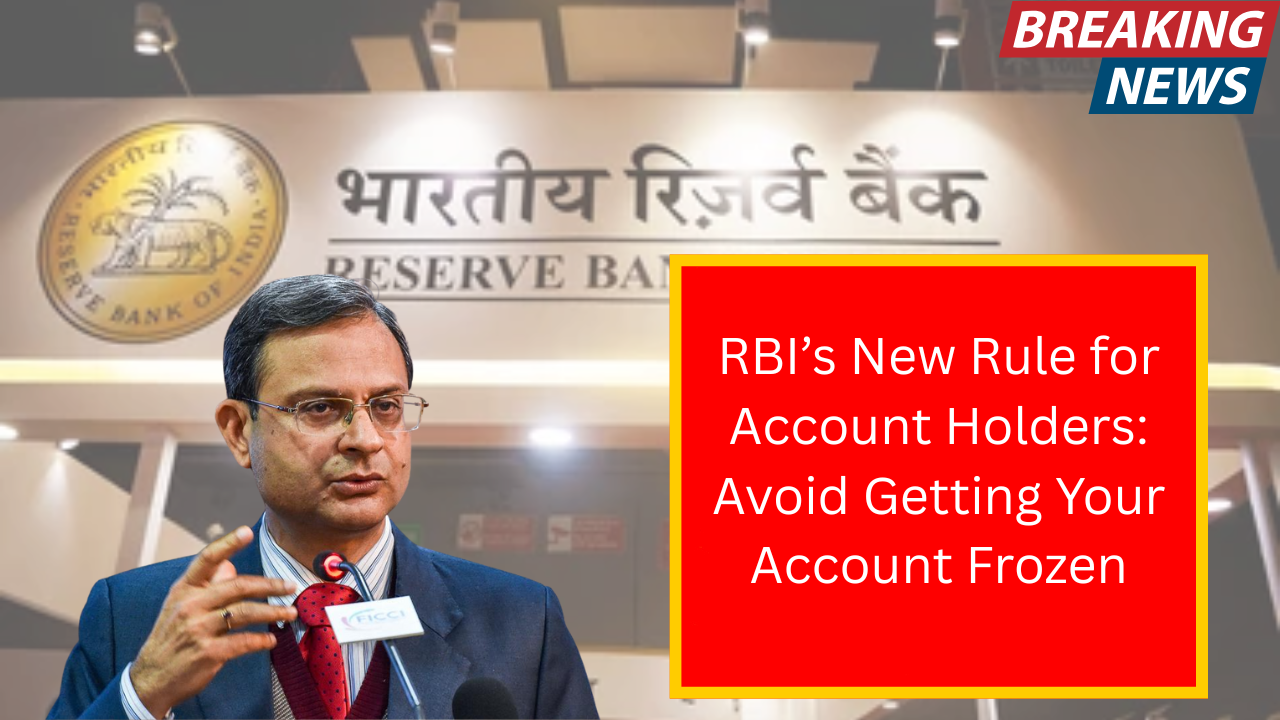The Reserve Bank of India (RBI) has just rolled out a rule that touches every single bank account holder in the country. Whether you’re a student managing your first savings account, a salaried professional juggling multiple accounts, or a retiree relying on your pension deposits this update concerns you.
From September 2025, banks have been instructed to enforce stricter Know Your Customer (KYC) compliance, and failure to update your details could mean restrictions on your account. In simple terms: without timely action, you might not be able to use your own money as smoothly as before. The move is designed to enhance security, curb fraud, and bring more transparency into India’s banking system.
What’s the New Rule All About?
Why It Matters
The RBI now requires every bank account holder regardless of how long you’ve had the account to periodically update their Know Your Customer (KYC) details. If you haven’t done it for over a year, you need to act fast banks have been asked to enforce this strictly. Miss the deadline, and your account could face restrictions, or even be temporarily frozen.
This isn’t limited to dormant or inactive accounts. Even if you use your account often, you still need to comply if your KYC is outdated.
What You Need to Do (Simple Steps)
- Check your KYC status via net banking, mobile app, or visiting your bank branch.
- Prepare valid documents (e.g., Aadhaar, PAN, address proof, photo).
- Submit or update KYC before the September 10 deadline to avoid disruptions.
In short: do it now, so you don’t have to scramble later.
How It Helps You & the Banking System
- Better Security: Your account is less vulnerable to fraud or misuse.
- Regulatory Compliance: Helps banks meet RBI-mandated anti-money laundering standards.
- Smooth Banking Experience: No sudden service blocks when you least expect them.
Quick Comparison: Before vs. Now
| Feature | Old System (Pre-New Rule) | New RBI Rule (September 2025) |
|---|---|---|
| KYC Update Requirement | Mostly only for inactive or new accounts | Now mandatory for all accounts after one year |
| Consequences of Delay | Often just reminders or minor delays | Risk of restricted, frozen account until KYC updated |
| Convenience | Required visiting only your branch | Many banks now allow video KYC, or update via any branch or BC agent. |
Wider Context: Supporting RBI’s Move
- Inoperative Accounts: RBI has also eased reactivation of long-dormant accounts. You can update KYC via video (Video-CIP), any bank branch, or through Business Correspondents no need to go back to the original branch.
- Deposit Insurance Reminder: RBI reminds account holders that deposit insurance is capped at ₹5 lakh per account in case of bank failure. So, if you have more, you’d still need to ensure compliance to remain within covered limits.
Actionable Tips: KYC Made Friendly
- Set a reminder -mark “Update bank KYC” in your phone.
- Go digital if you can -video KYC is often an option so you can avoid long queues.
- Carry the essentials -ID proof, address proof, photo in digital or paper form.
- Check for alerts -banks often send SMS or email reminders.
- If inactive for a while, reactivation is usually just waving these updated documents.
External Resources for More Reading
- For details on KYC procedures and inoperative accounts, check RBI’s official Master Direction on KYC FAQ page. Reserve Bank of India
- To learn more about video-based KYC updates and reactivation options, see this Economic Times article on RBI’s new guidelines.
FAQs
Q1: What happens if I miss the KYC deadline?
You could find your account services restricted no withdrawals, deposits, or online access until you comply. So it’s safer to update ahead of time.
Q2: Can I update KYC if I’m not near my home branch?
Yes! RBI allows updates through any branch of your bank, video KYC (V-CIP), or even via Business Correspondents in remote areas.
Q3: Does this apply to fixed deposits or just savings/current accounts?
The rule generally covers all bank accounts including savings, current, and fixed deposit accounts because KYC is a universal compliance requirement.
Q4: What if I’ve already done KYC recently?
You’re likely good to go. Just double-check your bank’s alert or login to confirm there aren’t any additional requirements.
Q5: Is this just for big banks like SBI or HDFC?
Nope! This applies across the board public, private, rural banks EVERY scheduled bank must ensure compliance.
Conclusion
So, here’s the bottom line: the RBI’s new rule mandating KYC updates for all bank account holdersisn’t meant to trip you up; it’s there to protect you. Imagine your account like a well-secured home keeping your documents updated is like changing the locks and alarms regularly. It might seem like a small hassle now, but it saves you a ton of trouble down the line. Just gather your ID proofs, pick your easiest method online, branch, or video and check it off your to-do list. Your future self (and your money!) will thank you. Keep banking hassle-free and secure.
Nand Kishor is a content writer covering business, economy, and world affairs. With a background in journalism, he focuses on clear, ethical, and insightful reporting. Outside of work, he enjoys chess, cricket, and writing short stories.
